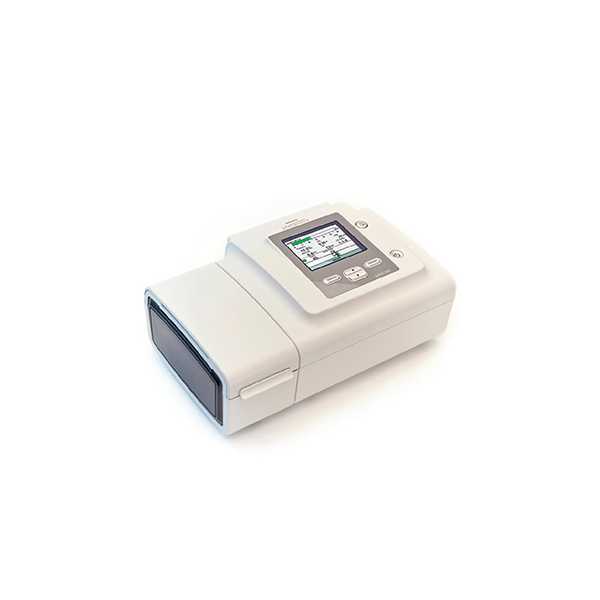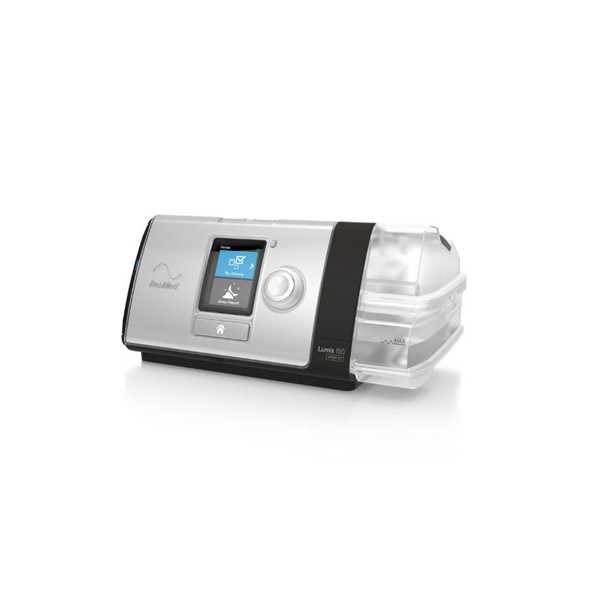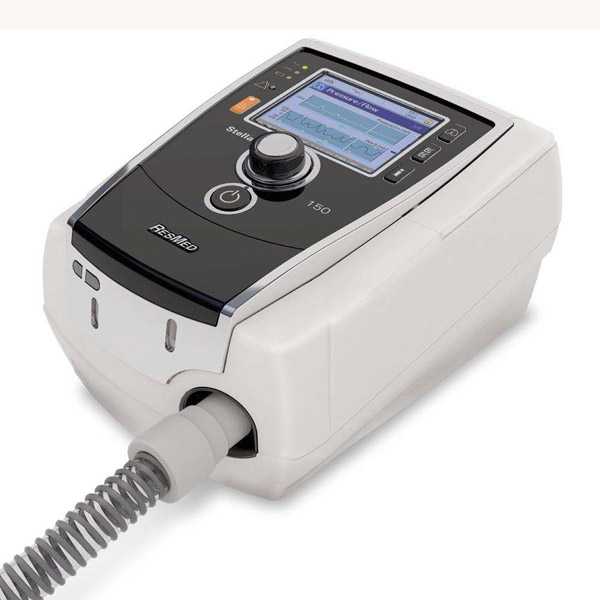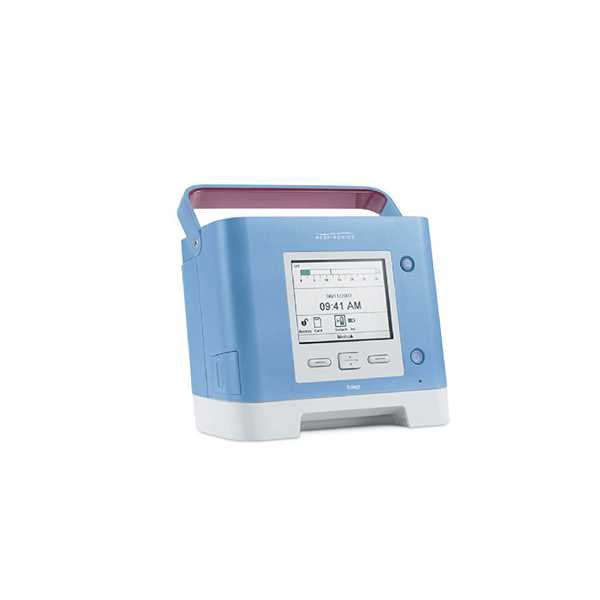lumis-100 non invasive ventilator
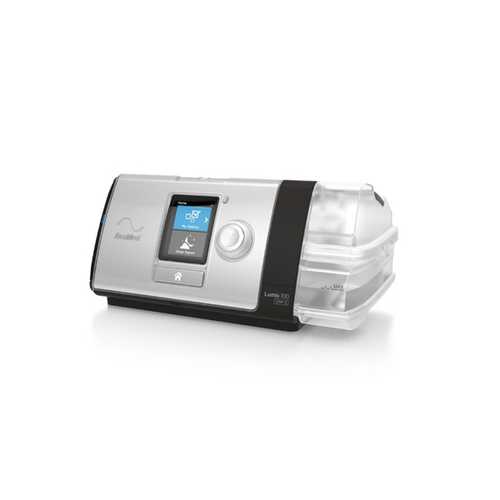
Purchase Price: ₹72000
short description
The ResMed Lumis 100 VPAP S APAC with humidifier is a non-invasive ventilator designed to aid patients with breathing difficulties. Specifically indicated for patients weighing over 13 kg with respiratory insufficiency or obstructive sleep apnea (OSA), the Lumis 100 VPAP ST device is suitable for home and hospital use.
- MODEL-LUMIS 100(WITH & WITHOUT HUMIDIFIER)
- BRAND-RESMED
- CATEGORY-RESPIRATORY
description
Portea offers equipment for rent and sale, providing support to patients dependent on the Lumis 100 non-invasive ventilator. Our experts assist in selecting the best product and administration range to suit individual needs.
The Lumis 100 VPAP S is a personalized non-invasive ventilator tailored to support the patient’s respiratory condition. Vsync ensures excellent patient-ventilator synchrony, even in the presence of significant leaks.
TiControl™ allows patients to set minimum and maximum constraints on their optimal inspiratory time for encouraging spontaneous breath. Trigger and cycle settings can be adjusted based on the patient’s condition, with five trigger and cycle sensitivity levels available.
QuickNav enables low-touch treatment adjustment, easily switching between settings and monitoring screens by double-tapping the home button.
Climate Control Auto ensures automatic humidification when used with HumidAir™ heated humidifier and ClimateLineAir™ heated tube, simplifying the process without complicated menus to navigate.
With Ramp and Ramp Down features, Lumis offers additional comfort, easing patients into and out of each treatment session. Portea and Lumis 100 work together to deliver enhanced healthcare services to needy patients.
AIRCRAFT USE
ResMed confirms that the device meets the Federal Aviation Administration (FAA) requirements (RTCA/DO-160, section 21, category M) for all phases of air travel.
dimensions
- DIMENSIONS-(H x W x D): 116 mm x 255 mm x 150 mm
- WEIGHT- 1268g
specifications
- MODES -CPAP, S MODE
- 90W power supply unit
- AC input range: 100–240V, 50–60Hz 1.0–1.5A, Class II 115V, 400Hz 1.5A, Class II (nominal for aircraft use)
- DC Output: 24V 3.75A
- Typical power consumption: 53W (57VA)
- Peak power consumption: 104W (108VA)
- Operating temperature: +5°C to +35°C
- Operating humidity: 10 to 95% relative humidity, non-condensing
- Operating altitude: Sea level to 8,500′ (2,591 m); air pressure range 1013 hPa to 738 hPa
- Storage and transport temperature : -20°C to +60°C
- Storage and transport humidity: 5 to 95% relative humidity, non-condensing
| S.No. | Features | Lumis 100 VPAPA S | Lumis 150 VPAP ST |
| Therapy modes | |||
| 1 | CPAP (continuous positive Airway pressure) | Present | Present |
| 2 | S (Spontaneous) | Present | Present |
| 3 | T (Timed) | Absent | Present |
| 4 | ST(Spontaneous-Timed) with optionaliBR | Absent | Present |
| 5 | PAC(Pressure Assist-Control) | Absent | Present |
| 6 | iVAPS with optional Auto EPAP | Absent | Present |
| Comfort and simplicity features | |||
| 1 | Vsync | Present | Present |
| 2 | Ticontrol | Present | Present |
| 3 | Trigger and cycle | Present | Present |
| 4 | Ramp | Present | Present |
| 5 | Ramp down | Present | Present |
| 6 | Climate Control Auto | Present | Present |
| 7 | Essentials mode | Present | Present |
| Data management | |||
| 1 | ResScan | Present | Present |
condition used for
- COPD (Chronic Obstructive Pulmonary Disease)
- Sleep apnea
- Lung disease
faqs
1. What is a Lumis?
Lumis is a series of non-invasive ventilators designed to provide personalized ventilation support for respiratory conditions. These ventilators incorporate individually-responsive technologies that continuously monitor and adapt to deliver tailored therapy tailored to each individual’s needs. With Lumis, patients receive customized and effective respiratory support, enhancing their overall comfort and treatment outcomes.
2. Is a non-invasive ventilator the same as a BiPAP?
Is a non-invasive ventilator equivalent to a BiPAP? NIV is commonly referred to as BiPAP, but BiPAP is a trademarked name. As the name implies, BiPAP delivers distinct airway pressures during inhalation and exhalation. The inspiratory positive airway pressure (CPAP) is higher than the expiratory positive airway pressure (CPAP).
3. What are invasive vs non-invasive ventilators?
Invasive ventilators deliver respiratory support using an endotracheal tube or tracheostomy tube, which is inserted directly into the patient’s airway. In contrast, non-invasive ventilators utilize different interfaces, such as masks or nasal prongs, to provide respiratory support without requiring invasive tubes.
Non-invasive ventilation has evolved to prioritize patient comfort and effectiveness, offering a valuable alternative for patients who can tolerate breathing assistance without requiring invasive procedures.
4. Why use non-invasive ventilation?
Non-invasive ventilation (NIV) is used for various medical conditions for the following reasons:
- Maintaining Upper Airway Patency: NIV can effectively treat and maintain the patency of the upper airway in patients with obstructive sleep apnea, preventing interruptions in breathing during sleep.
- Reducing Pulmonary Edema: In selected patients with congestive heart failure, NIV can help reduce venous return and pulmonary oedema, assisting in respiratory support and improving breathing.
Overall, non-invasive ventilation offers a valuable treatment option for patients with respiratory conditions, providing adequate support without the need for invasive procedures like intubation.
5. Why is non-invasive ventilation better than invasive?
Non-invasive ventilation (NIV) offers several advantages over invasive ventilation:
- Avoiding Tracheal Intubation: NIV provides respiratory support without requiring direct tracheal intubation, reducing the associated risks and complications of invasive procedures.
- Minimizing Sedation: Invasive ventilation often requires sedation to tolerate intubation, leading to potential complications like haemodynamic instability and delirium. NIV avoids extensive sedation, promoting a more comfortable and natural breathing experience.
- Reducing Infection Risks: Invasive ventilation increases the risk of nosocomial infections due to the insertion of tubes into the airway. NIV, on the other hand, does not involve such invasive measures, thereby reducing the risk of infections.
- Enhancing Patient Comfort: NIV uses various interfaces like masks or nasal prongs, allowing patients to maintain their natural airways and improve comfort during treatment.
Overall, non-invasive ventilation offers a safer and more patient-friendly approach, making it preferable in specific clinical situations where invasive ventilation may not be immediately necessary. It is especially beneficial for patients with respiratory conditions who can tolerate and benefit from breathing assistance without invasive procedures.
Doctor Consultation
Nursing
Physiotherapy
Trained Attendant
Elder Care
Mother & Baby Care
Lab Tests
Medical Equipment
Speciality Pharma
Critical Care

